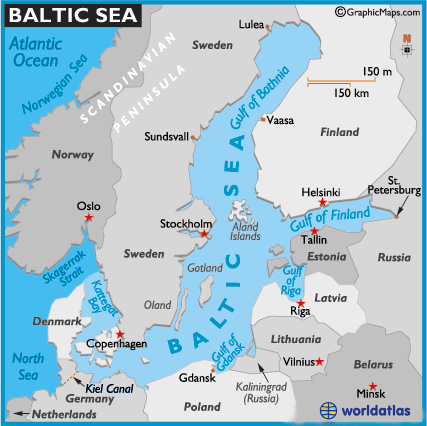Since being forced to join the Soviet Union as Republics during World War II, the Baltic states of Estonia, Latvia, and Lithuania had desired independence. These states had their independence during the early 20th century for about 20 years but were forced to be under Soviet rule once again because of the power of the Red Army in 1944. Losing independence and being forced to remain under the Soviet Union for over 40 years is shocking as the Baltic states all had strong Anti-Soviet movements that did not support any of the Soviet policies or the Russification of their lands (Siegelbaum). Because of this, these states obviously resented being forced back under the rule of the Russian power and took the first opportunity they had to achieve independence. As the power of the Soviet Union decreased throughout time the Baltic states gained ways to protest due to the changes in Soviet leadership and their policies.
Mikhail Gorbachev’s policy of glasnost allowed for the Baltic states to achieve their independence as it focused on promoting transparency between the government, the people, and the international community. Glasnost allowed for the people to push for independence as they were able to highlight their unwillingness to remain a Soviet Republic and their desire to be their own nations. (Geron, 135). Glasnost allowed for resistance movement to develop and expand in the Baltic states as it gave a form of legitimacy to their independence movements. Following the use of glasnost to push for the will of the people, referendums were held for the people of the Baltic states to vote on if they should leave the Soviet Union. The first referendum was held in Lithuania on February 9, 1991 where 90.5% of the voting age population stated that they wanted to leave the Soviet Union. The following referendums in Estonia and Latvia on March 3, 1991 had similar results with 77.8% and 73.7% of the eligible voting population respectively voted “yes” independence (Geron, 135-136).

"The Baltic Way" (1989)
The most interesting and important part of the Baltic independence is their unity during this process. All three nations have held different cultural, linguistic, and historical backgrounds, but worked together in 1989 to form the human chain for independence. One Soviet newspaper published on September 20, 1989 focused on the Latvian move for independence and the Board of the Duma of the Latvian People’s Front. This national movement wanted to reaffirm the desire of the Baltic people, “to be independent again and to regain their statesfree Estonia, free Latvia and free Lithuania (Mass Action in the Baltic Republics).” To do this, around 250,000 Latvians came to join a living human chain that joined together with Estonians and Lithuania that stretched over 600 kilometers from Tallinn, Estonia to Vilnius, Lithuania. This human chain was done on the 50th anniversary of the signing of the non-aggression pact between Nazi Germany and the Soviet Union. The non-aggression pact allowed for the USSR to formally annex the Baltic states and having the demonstration of the human chain on this day served as a symbol of their desire to secede from the nation that had forcefully placed it under its rule. Because of the history of the Baltic states with foreign invasion and Russia, they were very Anti-Soviet. This is the reason they were the last region to officially join the Soviet Union, and the first to declare their own independence in August, 1991 (Freeze, 462).
Bibliography
Freeze, Gregory L. Russia: A History, Third Edition. Oxford: Oxford University Press. 2009.
Geron, Leonard. “Roads to Baltic Independence.” The World Today. Vol 47, no. 8/9. (1991): 135-138. http://www.jstor.org.ezproxy.lib.vt.edu/stable/pdf/40396356.pdf?refreqid=excelsior:b028014a9fecf49162adac1acc47961e
“Mass Action in the Baltic Republics.” The Current Digest of the Russian Press. Vol. 41, no. 34. (1989): 5-6. https://dlib-eastview-com.ezproxy.lib.vt.edu/search/simple/doc?art=5&id=13551229
Siegelbaum, Lewis. “Baltic Independence.” Soviethistory. Web. 29 April. 2018. http://soviethistory.msu.edu/1991-2/baltic-independence/
“The Baltic Way.” (1989). Soviethistory. Web. 29 April. 2018. http://soviethistory.msu.edu/1991-2/baltic-independence/baltic-independence-images/#bwg210/1377










